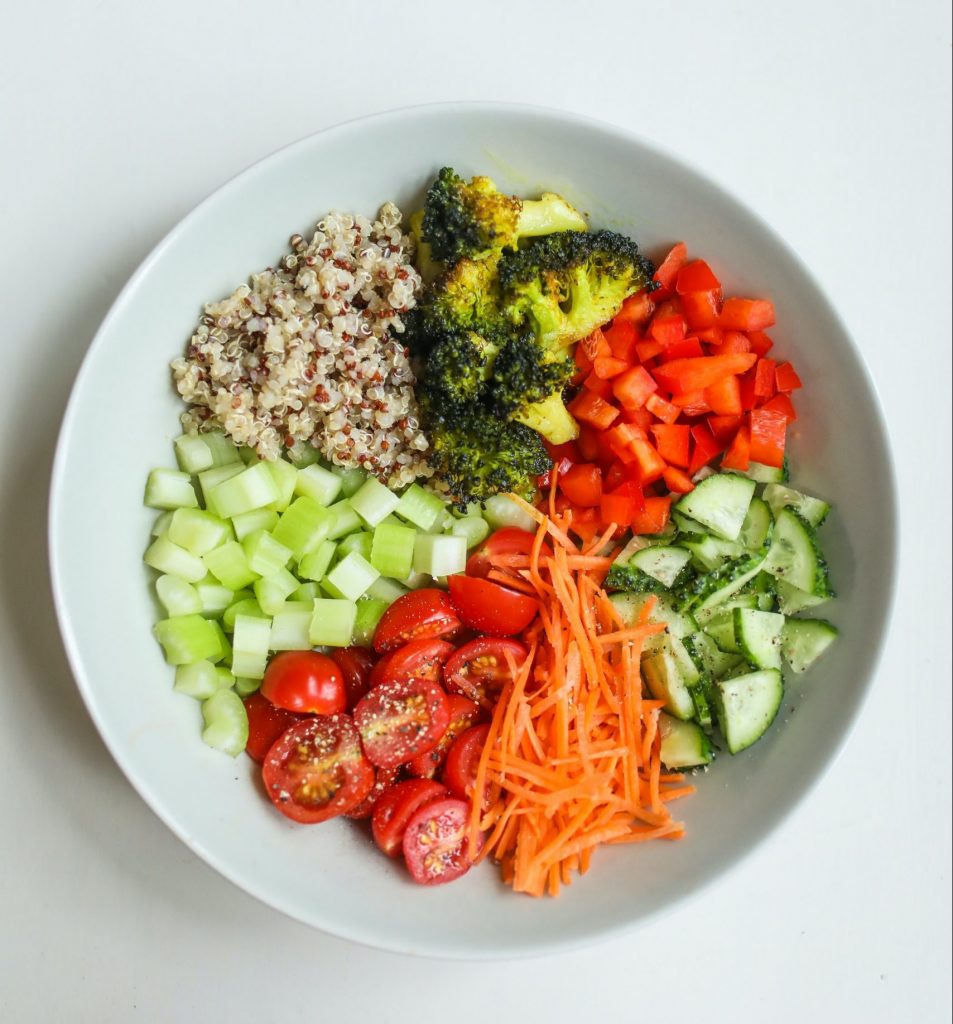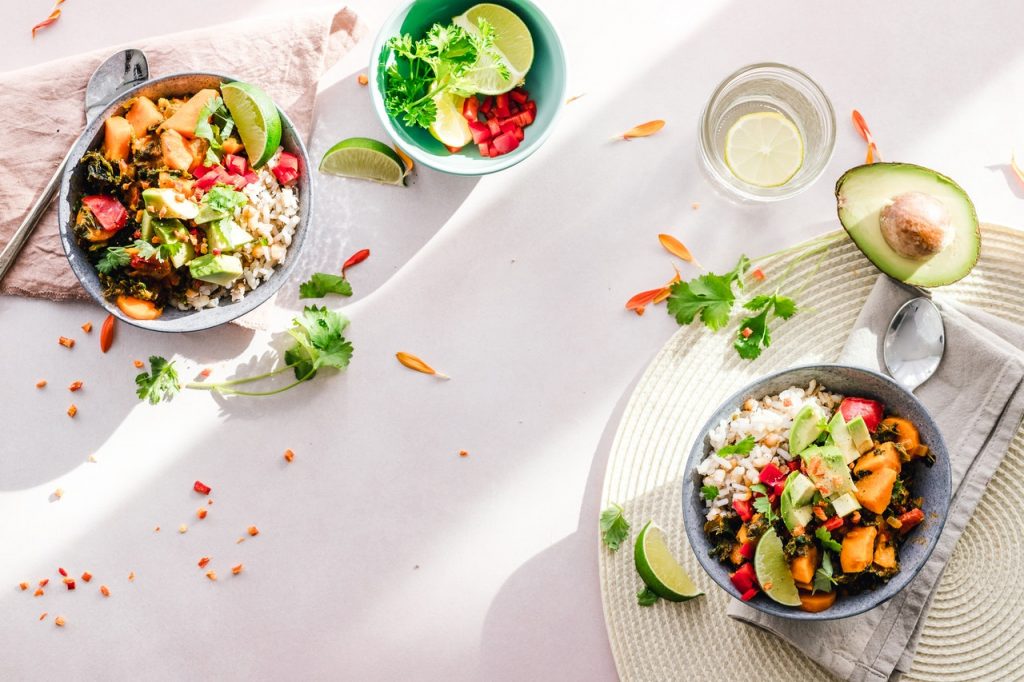Healthy Diets You Should Follow if You’re Over 50

Picture by Gary Barnes – Pexels
Healthy diets are something that you need to be aware of if you’re going through your middle age. If you’re reading this, perhaps you are in your 50s or close, you've created, learned and enjoyed a lot throughout your life, and there’s more to come!
We know that at this point of your life your family and friends are the most important thing to you, because they feel the same way, that’s why taking care of your body and health will be something that you should be aware of…
With this said, paying close attention to your nutrition becomes something that you should not ignore. The foods you eat can help promote good health and slow down age-related changes to your body.
Just by being more selective of what you eat and putting some discipline to it will make you live your happy life as usual, in this article, we will bring you these 3 diets you must try. Don’t worry, they’re divine!
What to expect in your 50s, and why to have a healthy diet.
Before diving into it, first, we will talk about what you should expect in your 50s, and why these diets will help you to overcome these problems.
- Brain: You’ll go into your 50s with more brain function than you had when you were 25. While it may dip a little around age 55, don’t dwell on that, let’s maintain good brain health!
- Immune System: This can be slower to go after viruses and other outside threats. It’s also more likely to attack itself by accident. And your body no longer makes as many “fighter” cells to destroy infections as it used to.
- Bones: When you’re younger, your body swaps out worn-down bone cells with new, strong ones. By the time you’re in your 50s, you have more broken-down bone cells than can be replaced. This means your bones naturally get weaker.
- Joints: The tissue and cartilage that cushion your joints begin to thin over time, and you’ll feel the effects of this in your 50s.
- Heart: Once you hit your 50s, your chances of a heart attack go up.
Healthy eating is a good opportunity not only to overcome these problems, but also to enrich your life by experimenting with different foods from different cultures, origins and with different ways to prepare food.
The Classic Mediterranean Diet: A Perfect and Healthy Diet for you!
The Mediterranean diet is based on the traditional foods that people used to eat in countries like Italy and Greece back in 1960.

Picture by por jcomp – freepik
From 1958 to 1983, Ancel Keys and his international team worked laboriously on the Seven Countries Study. Together, they studied the diet and lifestyle factors, as well as the incidence of coronary heart disease, among approximately 13,000 randomly selected middle-aged men (40–55 years old) from seven countries: The United States, Japan, Italy, Greece, the Netherlands, Finland, and Yugoslavia.
Data analysis revealed that in the Mediterranean regions (Greece and Southern Italy), where vegetables, grains, fruits, beans, and fish were abundant in a typical diet, heart disease was found to be rare. In the US and in Finland, the rates of heart disease were very high.
Health benefits of a Mediterranean diet
A traditional Mediterranean diet consisting of large quantities of fresh fruits and vegetables, nuts, fish, and olive oil—coupled with physical activity—can reduce your risk of serious mental and physical health problems by:
- Preventing heart disease and strokes.
- Keeping you agile.
- Reducing the risk of Alzheimer’s.
- Halving the risk of Parkinson’s disease.
- Increasing longevity.
- Protecting against type 2 diabetes.
Foods to Eat
Exactly which foods belong to the Mediterranean diet is controversial, partly because there is such variation between different countries.
The diet examined by most studies is high in healthy plant foods and relatively low in animal foods.However, eating fish and seafood is recommended at least twice a week.
The Mediterranean lifestyle also involves regular physical activity, sharing meals with other people and enjoying life.You should base your diet on these healthy, unprocessed Mediterranean foods:
- Vegetables: Tomatoes, broccoli, kale, spinach, onions, cauliflower, carrots, Brussels sprouts, cucumbers, etc.
- Fruits: Apples, bananas, oranges, pears, strawberries, grapes, dates, figs, melons, peaches, etc.
- Nuts and seeds: Almonds, walnuts, macadamia nuts, hazelnuts, cashews, sunflower seeds, pumpkin seeds, etc.
- Legumes: Beans, peas, lentils, pulses, peanuts, chickpeas, etc.
- Tubers: Potatoes, sweet potatoes, turnips, yams, etc.
- Whole grains: Whole oats, brown rice, rye, barley, corn, buckwheat, whole wheat, whole-grain bread and pasta.
- Fish and seafood: Salmon, sardines, trout, tuna, mackerel, shrimp, oysters, clams, crab, mussels, etc.
- Poultry: Chicken, duck, turkey, etc.
- Eggs: Chicken, quail and duck eggs.
- Dairy: Cheese, yogurt, Greek yogurt, etc.
- Herbs and spices: Garlic, basil, mint, rosemary, sage, nutmeg, cinnamon, pepper, etc.
- Healthy Fats: Extra virgin olive oil, olives, avocados and avocado oil. Whole, single-ingredient foods are the key to good health.
The real Mediterranean diet is about more than just eating fresh, wholesome food. Daily physical activity and sharing meals with others are vital elements. Together, they can have a profound effect on your mood and mental health and help you foster a deep appreciation for the pleasures of eating healthy and delicious foods, so this mean that it is not only a healthy diet for your 50s, but also it is a new way to try something new!
Read some delicious recipes for free here!
The DASH Diet
DASH stands for Dietary Approaches to Stop Hypertension. The DASH diet is a healthy-eating plan designed to help treat or prevent high blood pressure (hypertension), This Healthy diet is widely recomended for people that are turning to their 50s,

Picture by Polina Tankilevitch – Pexels
The DASH diet includes foods that are rich in potassium, calcium and magnesium. These nutrients help control blood pressure. The diet limits foods that are high in sodium, saturated fat and added sugars.
Studies have shown that the DASH diet can lower blood pressure in as little as two weeks. The diet can also lower low-density lipoprotein (LDL or “bad”) cholesterol levels in the blood. High blood pressure and high LDL cholesterol levels are two major risk factors for heart disease and stroke.
DASH Diet: What Can I Eat?
The DASH diet is a flexible and balanced eating plan that helps create a heart-healthy eating style for life. It's easy to follow using foods found at your grocery store.
The DASH diet is rich in vegetables, fruits and whole grains. It includes fat-free or low-fat dairy products, fish, poultry, beans and nuts. It limits foods that are high in saturated fat, such as fatty meats and full-fat dairy products.
When following DASH, it is important to choose foods that are:
- Grains and Starchy Foods: Sliced Bread, Tortilla, Roll,} Bagel, Crackers, Dry Cereal And Granola, Cooked Rice, Cooked Pasta, Cooked Quinoa, Cooked Oats, cup Cooked Grits. Cooked Polenta. Cooked Barley cooked Couscous, Ancient Grains, Sprouted Grains, Corn, Lima Beans Potato.
- Vegetables. Spinach Cabbage, Cucumbers, Radishes Mushrooms, Zucchini Onion Eggplant Broccoli, Brussel Sprouts, cup Pumpkin.
- Fruit: Apple, Orange, Banana, Peach, Pear, Nectarine, Banana, Plum, Kiwi), Fresh or Frozen Fruit (Cherries, Berries, Mango, Pineapple, Kiwi, Grapes, Melon), Dried Fruit, 100% Fruit Juice.
- Dairy: Low Fat Milk, Low Fat Yogurt, Low Fat Cottage Cheese (low sodium), ounces Low Fat Cheese.
- Protein: Chicken, Turkey, Fresh Tuna, Salmon, 1 ounce Shrimp, Mussels, Pork loin, Grass-Fed Beef, Antelope, Elk, Venison, egg, Tofu, Pea Protein Burger/Veggie Burger.
- Nuts, Seeds, Beans, and Legumes: Almonds (unsalted), ounces Pistachios (unsalted), ounces Cashews (unsalted), ounces Walnuts (unsalted), ounces Peanuts (unsalted) ounces Other Nuts (unsalted).
- Butter, Oil, and Other Fats: Avocado, soft Margarine, Olive Oil, avocado Oil, Canola Oil Mayonnaise Salad Dressing (full fat).
Check out some recipes here!
The Flexitarian Diet: The Green Diet for your 50s
The Flexitarian Diet is a style of eating that encourages mostly plant-based foods while allowing meat and other animal products in moderation.

Picture by Ella Olsson – Pexels
It’s more flexible than fully vegetarian or vegan diets, it's a great choice for your next 50s.
It’s based on the following principles:
- Eat mostly fruits, vegetables, legumes and whole grains.
- Focus on protein from plants instead of animals.
- Be flexible and incorporate meat and animal products from time to time.
- Eat the least processed, most natural form of foods.
- Limit added sugar and sweets.
Foods to Eat on the Flexitarian Diet
Flexitarians emphasize plant proteins and other whole, minimally processed plant foods while limiting animal products.
Foods to eat regularly include:
- Proteins: Soybeans, tofu, tempeh, legumes, lentils.
- Non-starchy vegetables: Greens, bell peppers, Brussels sprouts, green beans, carrots, cauliflower.
- Starchy vegetables: Winter squash, peas, corn, sweet potato.
- Fruits: Apples, oranges, berries, grapes, cherries.
- Whole grains: Quinoa, teff, buckwheat, farro.
- Nuts, seeds and other healthy fats: Almonds, flaxseeds, chia seeds, walnuts, cashews, pistachios, peanut butter, avocados, olives, coconut.
- Plant-based milk alternatives: Unsweetened almond, coconut, hemp and soy milk.
- Herbs, spices and seasonings: Basil, oregano, mint, thyme, cumin, turmeric, ginger.
- Condiments: Reduced-sodium soy sauce, apple cider vinegar, salsa, mustard, nutritional yeast, ketchup without added sugar.
- Beverages: Still and sparkling water, tea, coffee.
When incorporating animal products, choose the following when possible:
- Eggs: Free-range or pasture-raised.
- Poultry: Organic, free-range or pasture-raised.
- Fish: Wild-caught.
- Meat: Grass-fed or pasture-raised.
- Dairy: Organic from grass-fed or pastured animals.
Check out some recipes of Flexitarian diet here!
Important tips
-
Plan ahead.
If you have a busy schedule, planning your meals ahead of time is a simple yet highly effective way to eat a nutritious diet.
Once a week, try to plan your meals for the entire week by writing out a schedule, batch cooking, or following other meal-planning techniques. Doing so may help you buy the right groceries, prevent food waste, and reach your health goals.
-
Choose water as your main beverage.
A habitually high intake of sugary beverages is associated with increased weight gain, obesity, heart disease, and type 2 diabetes
Regularly choosing water as your drink may lower your intake of simple sugars and “empty calories,” or foods and drinks that provide no nutritional value.
Other great beverage choices include coffee, tea, dairy milk, plant-based milk, and flavored water.
-
Quit Sugar.
Sugar is your number 1 enemy, Added sugar (sugar that is added to food rather than occurring naturally) increases inflammation in the body. It causes spikes in our blood sugar and raises the risk of numerous health conditions, including type 2 diabetes, fatty liver disease, heart disease and obesity. Sugar is harmful because it also provides empty calories, it doesn’t matter which diet you choose, make sure sugar is not on the menu.
-
Inspire others to consume the same kind of food.
These diets are not only for people over 50, it’s for everyone! And it can not only make it easier to keep up with the diet, but it will also make the people that surround you in good health and shape!
-
Consult a Nutritionist or Dietitian.
Nutritionists can create diet plans, teach you about eating and help you address unhealthy eating behaviors. They specialize in helping you find foods you and your body love.
If you’re in your 50s, it’s often difficult to know which diet is best, especially as you’re experiencing physical changes associated with aging. The Mediterranean, Flexitarian, and DASH, alongside intuitive eating, provide a variety of benefits for your heart, brain, and overall health.
Choosing the one that’s right for you requires consideration of your personal goals and nutritional needs. The right choice is the diet that you can maintain long term and keeps you feeling your best.
Read more about health and fitness in our Purehoarder.com Blog!

